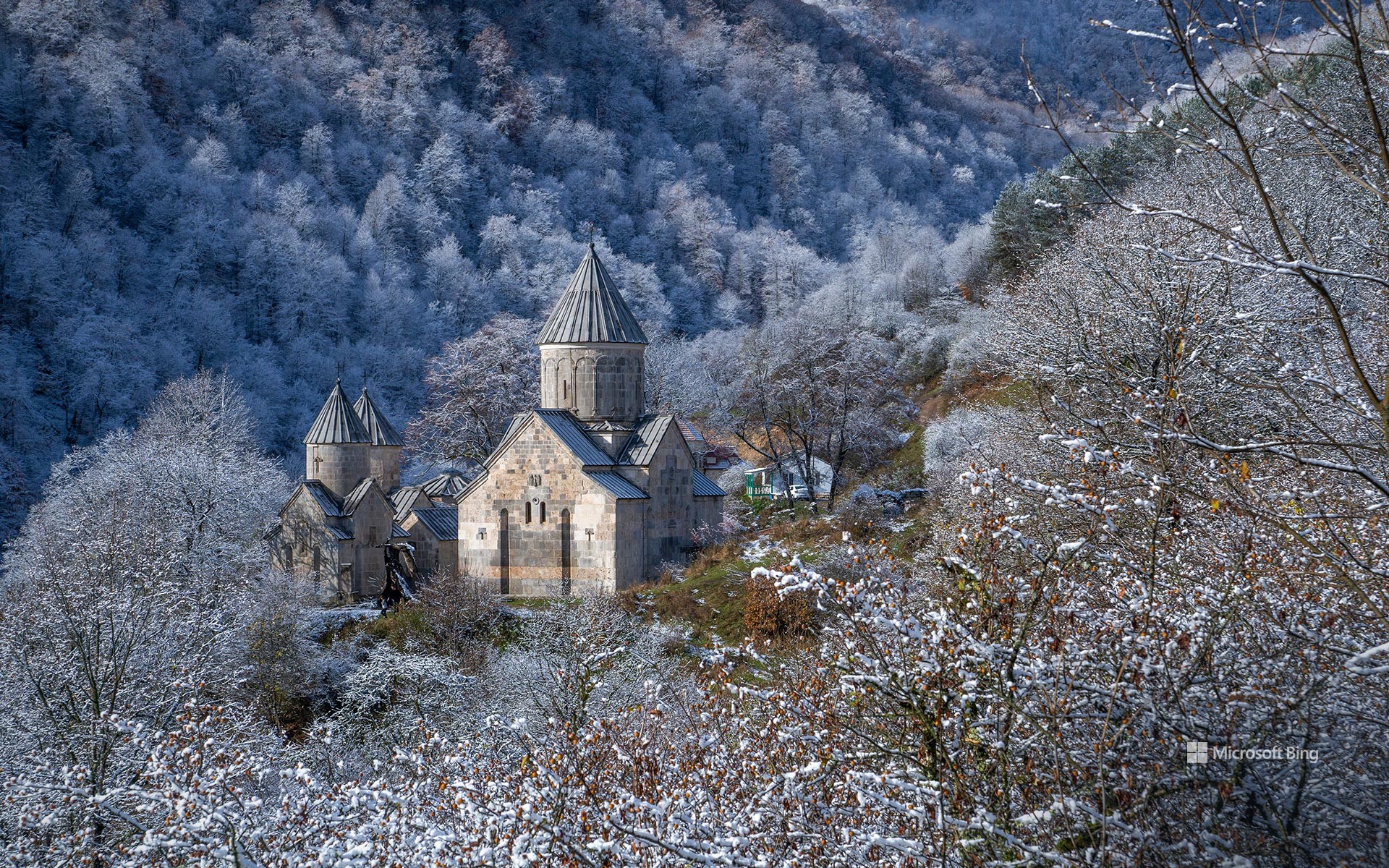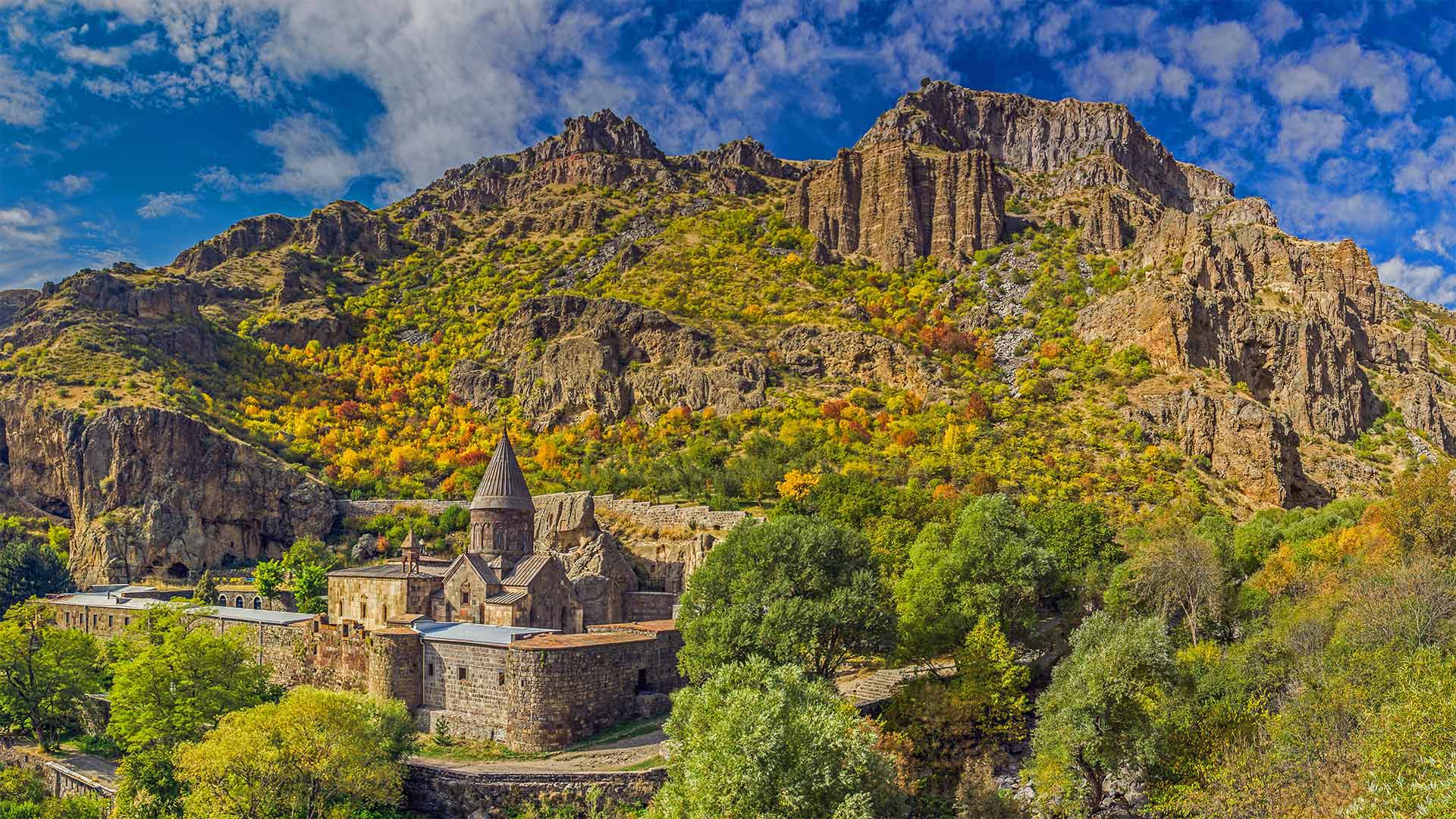Haghartsin修道院,迪利扬国家公园,亚美尼亚 Haghartsin Monastery, Dilijan National Park, Armenia (© Alexey Kharitonov/Shutterstock)

Haghartsin修道院,迪利扬国家公园,亚美尼亚 Haghartsin Monastery, Dilijan National Park, Armenia (© Alexey Kharitonov/Shutterstock)
老鹰起舞的地方 Where eagles dance
Haghartsin 修道院,亚美尼亚
Haghartsin 修道院隐藏在亚美尼亚北部的森林之中,被迪利扬国家公园郁郁葱葱的风景所环绕,是亚美尼亚中世纪建筑的瑰宝。修道院的建筑群由几座华丽的建筑组成,包括圣母教堂、圣格雷戈里教堂和圣斯特帕诺斯教堂。这些建筑的历史可以追溯到10世纪,上面装饰着精雕细琢的石碑、十字拱门以及其他装饰物,展现了那个时代的精湛工艺。修道院的名字“Haghartsin”的意思是“鹰之舞”,它为那些想要感受亚美尼亚悠久历史的人提供了一个宁静的去处。当你漫步在幽静的庭院中,探索周围的森林时,一种永恒的感觉油然而生。
Haghartsin Monastery, Armenia
Hidden among the forests of northern Armenia, Haghartsin Monastery is a gem of medieval Armenian architecture. Surrounded by the lush landscapes of Dilijan National Park, the monastery complex consists of several ornate structures, including the Church of the Holy Mother of God, St. Gregory's Church, and St. Stepanos' Church. The buildings date back to the 10th century and are adorned with intricately carved stone monuments, crossing arches, and other decorative details, showcasing the skilled craftsmanship of the era. Haghartsin, which translates to 'dance of the eagles,' offers a serene escape for those seeking to connect with the country's rich history. A sense of timelessness pervades as you wander through its quiet courtyards and explore the forested surroundings.
格加尔德修道院,亚美尼亚 Geghard Monastery, Armenia (© traumlichtfabrik/Getty Images)

格加尔德修道院,亚美尼亚 Geghard Monastery, Armenia (© traumlichtfabrik/Getty Images)
A monastery in the mountain
Built into the side of a mountain in the Azat Valley of Armenia, Geghard Monastery is one of the most-visited tourist destinations in the country. The location of the monastery has been inhabited for millennia and venerated by locals since the pre-Christian era due to the spring which emanates from one of the caves in the mountainside. The monastery was originally founded in the 4th century by Saint Gregory the Illuminator—the patron saint of the Armenian church—though none of the original buildings survive.
The buildings comprising the existing complex were begun in the 13th century and are now regarded as some of the best-preserved examples of medieval Armenian architecture. But what really makes the complex unique are the monastic cells and chapels hewn directly into the mountain itself, with elaborate bas relief ornamentations and multiple exquisite examples of Armenian stone crosses, or 'khachkar,' throughout. Designated a UNESCO World Heritage Site, protections extend to both the monastery complex and the surrounding countryside, making a trip there an opportunity to step back into the medieval world.